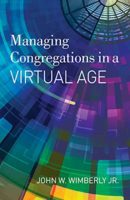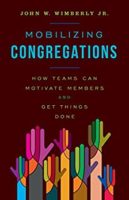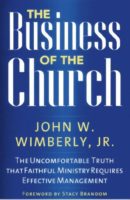
Every congregation is trying to figure out how to reach millennials and Gen Z folks. One East Coast congregation I have worked with for six years has figured it out. They have more than doubled their worship attendance with most of the 250 newcomers being millennials or Gen Z.
Worshipping with the congregation last fall, I was struck by a comment from the senior minister: “We welcome you to this non-virtual space.” She then talked about the need for a place where we can unplug from the internet, turn off cellphones, and otherwise disconnect from our internet-driven world. As she spoke, I watched the millennial and Gen Z worshippers nodding in agreement. I found myself nodding in agreement as well!
What Younger Generations Want
Congregations having success with millennials and Gen Z understand that the similarities between these two generations are striking. A Pew study found that
On a range of issues … the views of Gen Z—those ages 13 to 21 in 2018—mirror those of Millennials. In each of these realms, the two younger generations hold views that differ significantly from those of their older counterparts. In most cases, members of the Silent Generation are at the opposite end, and Baby Boomers and Gen Xers fall in between.
These congregations confirm what polls tell us younger generations want. They don’t need big digital screens in the sanctuary or “contemporary” music or gimmicks in worship. They want an hour of inspiring worship that leaves them feeling transformed. They want to walk away from worship feeling hopeful about themselves and the future.
Spiritual Growth
Congregations try all kinds of strategies to attract younger generations, but too few pay attention to what those younger folks tell us they want—namely, spiritual growth.
Instead of helping people learn basic spiritual disciplines like prayer, the use of silence, and the study of spiritual masterworks, too many congregations offer newcomers “programs.” Too many sermons sound like the partisan talking points from a political platform rather than a pastor laying out a spiritually-grounded motivation to seek justice. Stephen Olikara, founder of the nonpartisan Millennial Action Project, says that Millennials are “rejecting the old partisan boxes, they’re rejecting the old binary choices.”
When it comes to spirituality, what younger generations want is in sync with what older generations want. These days, I never do a strategic planning process where the congregation doesn’t list spiritual growth as a key strategic goal. From the oldest to the youngest, members hunger for the spiritual depth religious experiences can provide.
In the past, congregations often set goals focused on Christian education. Today they aim for spiritual growth. The difference isn’t just a matter of terminology; it is a difference in what people are seeking. People are not searching for a better education series at church—they can easily find great speakers and inspirational material online. What they want is a “non-virtual” space—a still space where they can move deeper into the mystery of who they are, who we are as the human race, who God is. Spiritual growth includes but is not limited to Christian education.
Congregations Find Their Niche
In some ways, technology and other changes in society are forcing religious communities to rediscover their distinctive niche in the world: spirituality. Lots of people study the Bible as great literature. Only religious communities study the Bible as a spiritual guide into the great mysteries of life. Lots of people meditate to center themselves. Only spiritual communities encourage the use of silence as a gateway to the heart of God. Many people do community service. Only spiritual communities engage in community service as a spiritual discipline.
I think congregations focused on creating a “non-virtual space” have it right. The key to attracting the younger generations is not simply to get better technology into our congregations—though there are many reasons to have state-of-art technology for websites, financial management, etc. The key is helping all of us to unplug from our devices so we can plug into the realm of God.
I have reservations about the current trend directing us away from worship attendance metrics. As the East Coast congregation demonstrates, helping people go deeper spiritually can also lead to increased numbers in worship. Worship attendance and spiritual growth are not an “either-or” tradeoff, but a “both-and” opportunity. When our worship becomes an inspirational, non-virtual space where people can connect with God, others, and themselves, worship and spiritual growth increase in tandem.
John Wimberly is an experienced pastor and consultant. As a consultant, he has worked with congregations and judicatories on strategic planning, staff designs for the 21st century, and congregational growth as well as financial and administrative management. He has MBA, MDiv, and PhD (theology) degrees. His books focus on effective management and leadership. John believes congregations can have a bright future!



